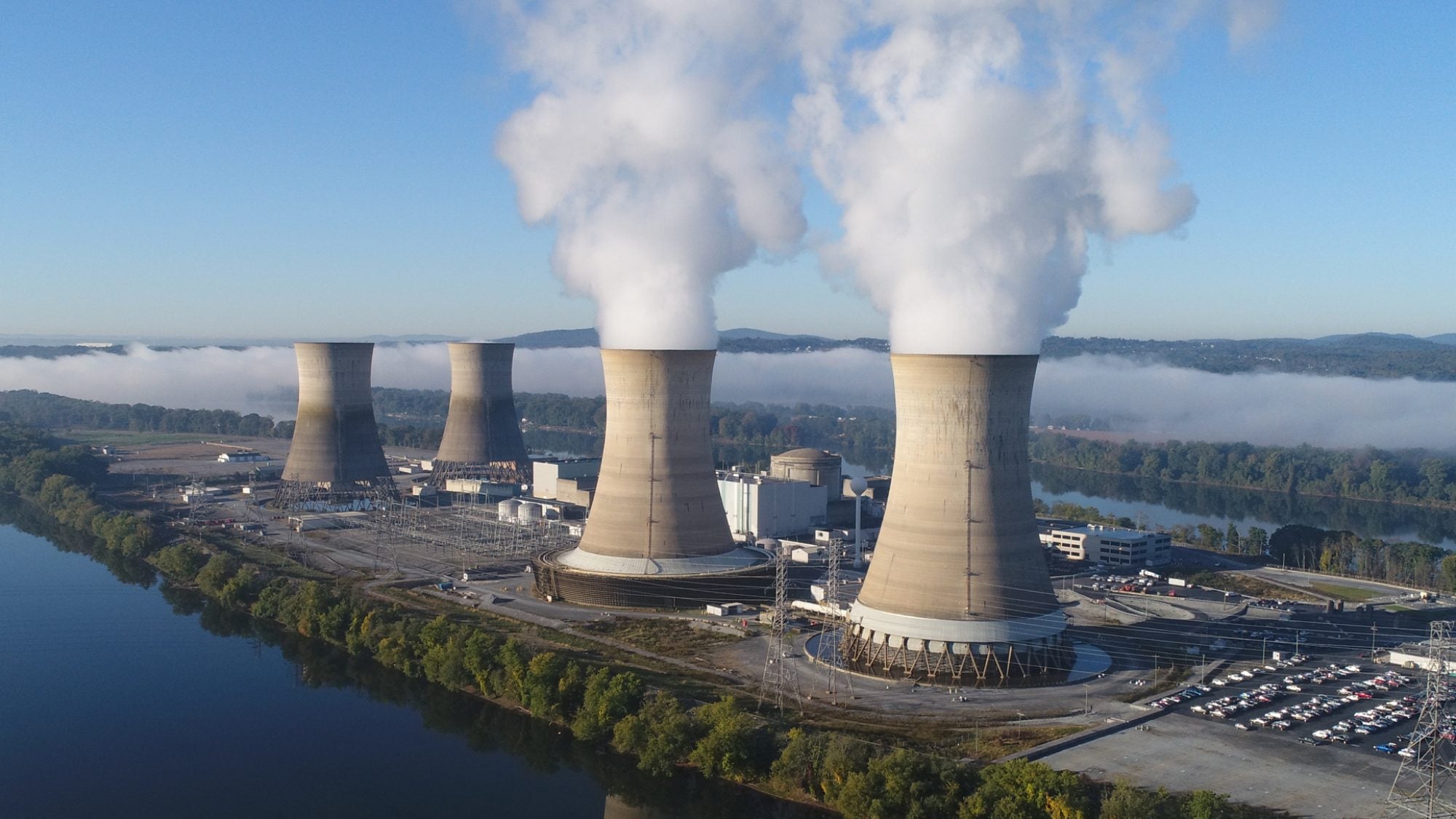
Title: AI’s Energy Demands and Nuclear’s Uncertain Future
The closing months of 2024 witnessed a series of deals between the nuclear industry and AI technology companies. These agreements may represent a step toward ensuring a steady energy supply for AI while providing much-needed revenue for nuclear power companies. This article examines the challenges of nuclear power meeting AI’s energy demands and argues that these challenges are significant, the demand itself remains uncertain, and a more cautious approach to government investment in this sector is warranted.
The New Deals
In recent months, AI companies have seen a surge in interest in nuclear energy, driven by the increasing power demands of data centers. Tech giants are looking for reliable, low-carbon power sources to sustain their operations, leading to strategic investments in nuclear projects. However, the nature of these investments varies significantly, with some focusing on established technology and others betting on unproven innovations.
In September 2024, Microsoft signed an agreement with Constellation Energy to purchase power for its data centers by restarting the Three Mile Island plant in Pennsylvania. Closed in 2019 due to economic challenges, it is yet to be determined whether Microsoft’s agreement will be financially viable. The $1.6 billion plan involves refurbishing the plant, renewing its operating license, and resuming operations by 2028.
The following month, both Google and Amazon announced investments in small modular reactors (SMRs)—nuclear reactors producing less than 300 MWe—to power future AI data centers. Amazon partnered with X-Energy—a designer of high-temperature gas reactors—and other firms, committing $500 million to reactor design, licensing, and TRISO fuel fabrication. Additionally, Amazon secured an agreement with X-Energy and Energy Northwest, a consortium of Washington state utility companies, to procure at least 320 MWe from four reactor modules.
Meanwhile, Google signed a Master Plant Development Agreement with Kairos, a company developing molten salt-cooled, TRISO fuel-powered reactors. The deal aims to deploy 500 MWe by 2035, with the first reactor expected online by 2030. Kairos is ahead of X-Energy in development, receiving a US Nuclear Regulatory Commission construction license in November 2024 for its small-scale Hermes 35 MWe demonstration reactor in Oak Ridge, Tennessee.
It is essential to distinguish between these agreements. Microsoft is investing in a proven, decades-old nuclear power plant, betting on established technology with the potential for continued operation. In contrast, Amazon and Google are investing in speculative projects. No SMRs currently operate in the United States or Europe. While Russia has deployed a floating SMR and China has a single demonstration SMR, no such reactors exist in the Western world, and their performance and economic viability remain unproven.
Despite the enthusiasm surrounding these deals, their potential to tangibly increase nuclear power remains uncertain. Identifying successful collaboration models between AI companies and the nuclear industry, if any exist, will be crucial. Governments must carefully evaluate the soundness of their investments in this evolving sector and compare them with more immediate, cost-effective solutions such as wind, solar, geothermal, and storage.
The Reality of AI’s Energy Demand
AI data centers may consume vast amounts of electricity, and future expansions could increase energy demand. However, a recent McKinsey report suggests that the primary challenge in the United States is not increasing energy production but overcoming limitations in grid connections and transmission. Expanding transmission infrastructure and using existing and mature energy technology may be a more practical solution.
Moreover, AI’s energy needs may not escalate as anticipated. Emerging innovations, such as in-memory computing, optical data transmission, and 3D stacked computing, could significantly reduce AI’s power consumption. Additionally, increased model efficiency and potential shifts in AI usage patterns could further curb demand.
The Chinese model DeepSeek, for example, demonstrates that significantly less energy may be required for AI advancement. DeepSeek, whose product is similar to OpenAI’s ChatGPT, reportedly consumes ten to forty times less energy than its counterparts due to more efficient chip usage.
Government intervention could also temper AI’s energy consumption. Regulatory bodies have already taken steps to ensure grid stability, as seen when the US Federal Energy Commission blocked a proposed deal between Amazon, Talen Energy’s Susquehanna nuclear plant, and PJM Interconnection. The commission ruled that diverting power to Amazon’s data centers would jeopardize grid reliability and consumer prices.
Challenges for Nuclear Power
The primary obstacle for nuclear energy, particularly SMRs, is cost—and the fact that they currently do not exist and are therefore unproven. Since the 1960s, only extra-large reactors (600–1,400 MWe) have been economically viable due to economies of scale: it is more cost-effective to build a single large reactor than many smaller ones. SMRs, despite their promise, face similar financial hurdles.
NuScale, for example, initially designed a 50 MWe reactor and obtained US Nuclear Regulatory Commission (NRC) design certification, only to later pivot to a more cost-effective 77 MWe model currently under review at the NRC. Oklo Inc., a microreactor designer, followed a similar trajectory, moving from a 1 MWe model to a 15 MWe design, and is now considering a 75 MWe reactor.
Furthermore, claims that factory production of nuclear reactors will reduce costs remain unproven. The Westinghouse AP-1000 reactor, designed for modular assembly and built in a factory, ultimately faced quality control issues that resulted in cost and schedule overruns and contributed to Westinghouse’s 2017 bankruptcy. The two AP-1000 reactors at Georgia’s Vogtle plant took over a decade to complete and cost over $35 billion, far exceeding the original $14 billion estimate.
Construction delays are another persistent issue. Recent reactor projects in France, Finland, the United Kingdom, China, and the UAE have all experienced significant schedule overruns, ranging from three to fourteen years. Cost overruns are similarly widespread, with some projects exceeding initial estimates by factors of two or four.
Beyond financial concerns, SMRs introduce additional challenges, including waste disposal, security, and nuclear proliferation risks. The United States has no long-term plan for nuclear waste disposal, as progress towards a deep geologic repository for disposal of high-level nuclear waste remains at an impasse, with Congress last appropriating funds in 2010. Advanced reactors could exacerbate this issue with increased waste volumes and complex processing requirements. Additionally, higher fuel enrichment levels and potential reprocessing needs will necessitate stringent security and safeguard measures, further raising costs.
The Path Forward
Investing in nuclear power—especially unproven SMRs—would require tens to hundreds of billions of dollars, a level of funding dependent on government support. The critical question is whether this investment will yield sufficient returns.
Interest in nuclear-powered AI data centers is growing worldwide, with countries like France exploring nuclear options for new data centers. While expanding nuclear capacity in established nuclear nations may be feasible, introducing nuclear power in non-nuclear countries presents significant hurdles. Establishing legal and regulatory frameworks, securing financing, and integrating reactors into existing grids would take decades and require substantial investment.
Governments must therefore invest carefully. SMRs are unlikely to be ready to meet significant electricity needs for another twenty years or more, by which time electricity markets will have evolved, with cheaper storage and renewables more widely available. The most viable short-term nuclear option—Microsoft’s approach of reviving existing plants—is limited, as few shut-down but not decommissioned plants remain. In the interim, governments should prioritize investments in proven energy sources, such as wind, solar, geothermal, and storage technologies. For non-nuclear nations, a rigorous cost-benefit analysis of nuclear energy, including full lifecycle costs and deployment challenges, is essential. If, in the coming decade, nuclear power—particularly SMRs—proves economically unfeasible, investments in the sector will be for naught.
…
Allison Macfarlane is Director and Professor at the School of Public Policy and Global Affairs at the University of British Columbia. She previously served as Chairman of the US Nuclear Regulatory Commission (2012-2014) and was a member of the Blue Ribbon Commission on America’s Nuclear Future.
Image Credit: Constellation Energy, CC BY-SA 4.0, via Wikimedia Commons
Recommended Articles

Export controls on AI components have become central tools in great-power technology competition, though their full potential has yet to be realized. To maintain a competitive position in…

The Trump administration should prioritize biotechnology as a strategic asset for the United States using the military strategy framework of “ends, ways, and means” because biotechnology supports critical national objectives…

Fiji, a Pacific Small Island Developing State (PSIDS), faces rural electrification challenges due to its dispersed geography and climate vulnerabilities. With 6 percent of Fijian rural households lacking…